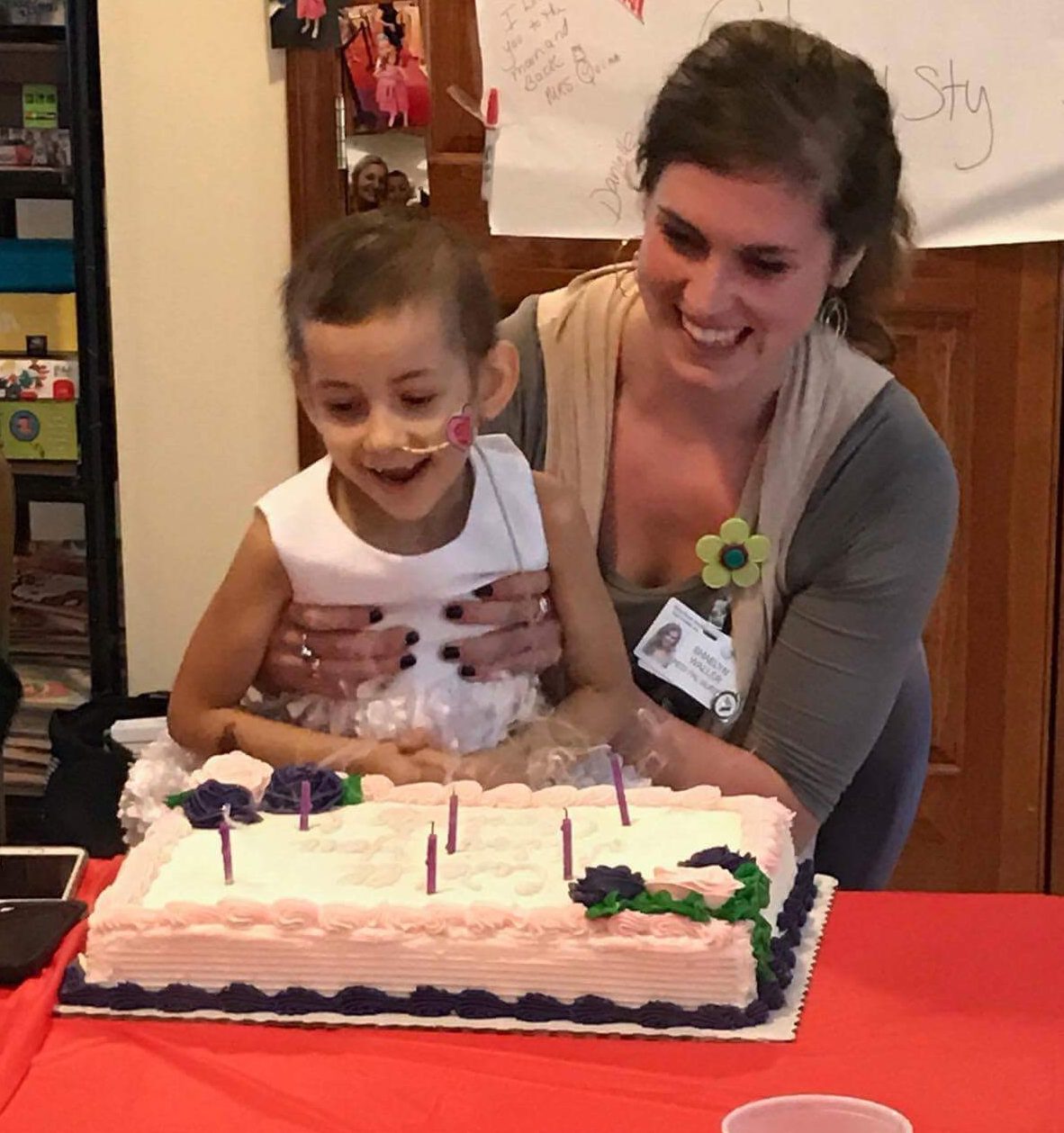Shaelyn Waller, BSN, RN works as a community based pediatric palliative care nurse in Massachusetts.
1) What is the role of a community based palliative care nurse?
The role changes case to case because each child and family has specific needs. Some patients may have stretches of stability in their disease progression. I will check in with these patients every few months to asses any adjustments they may need with their care plan or community resources. With newly diagnosed patients, my role is largely education and support during times of transitions. During acute changes in status and during end of life, I work closely with the child’s hospital medical team to advocate for the family’s wishes and help manage the patient’s symptoms.
In every case we (pediatric palliative care team) work to empower parents through support, knowledge and community connection, helping them feel less alone and as prepared as possible for an often unimaginable situation. No matter the acuity of the case, each patient gets a detailed assessment and a review of the plan of care to establish the needs and the gaps in care.
2) Why did you decided to work in palliative care?
While in nursing school, I learned that inpatient nurses don’t have much ability to follow-up with families after an admission or after the loss of a loved one in the hospital. I knew I was interested in working in an environment where I had the availability to support families through many stages of their illness and death. I took an elective in nursing school called “Caring At The End Of Life” that opened my eyes to pediatric palliative care and the importance of care in the home. Pedipal is a great fit for me.
3) People often assume that working in pediatric palliative care ‘must be so sad’. How would you describe your job?
There are parts of my job that are devastatingly sad. It is never easy to watch the struggles my patients and families face. However there are many more moments of beauty and joy. Watching a child grow is a privilege, but watching a medically complex child and their family grow and thrive despite the adversity they face is amazing. I am humbled to be a part of their experience.
4) Can you share an example(s)/story of the joy you find in this work?
One of my favorite parts of this job is empowering parents with knowledge and support to live in a little less fear, even if that comes from just knowing they aren’t in this alone.
Another thing that I appreciate is how when children suffer, there is no “poor me” or taking it out on others — children express their suffering in ways that are raw but most of the time have a positive spin. Most kids are able to laugh, even in their pain, nausea or fear.
There are different kinds of triumphs in palliative care. It is not always ‘getting better’. Often times it is helping a break in suffering or finally getting a need that we have been advocating for. For example, we have a little girl on our program that has a trach and G-tube. When I first met her, she didn’t have a G tube and would lay flat without movement due to malnutrition and reflux. After assessing her, I immediately told her family I thought she needed a G tube, and her caregiver allowed me to contact her GI and advocate for the G tube. She received the G-tube and almost immediately learned to sit-up, had energy to laugh, and quickly started to show her personality.
5) What do you want people to know about palliative care?
Palliative care focuses on promoting quality of life through medical and psychosocial interventions. Palliative care is not giving up! We are here to help your child live the best life possible for whatever time you have. We have fun. We help your family have positive days and make memories.
Palliative care is still underutilized in some communities, and in other communities lack of funding creates gaps in access. My hope is that one day all families who have a child diagnosed with a life limiting illness will automatically receive palliative care in their home.
